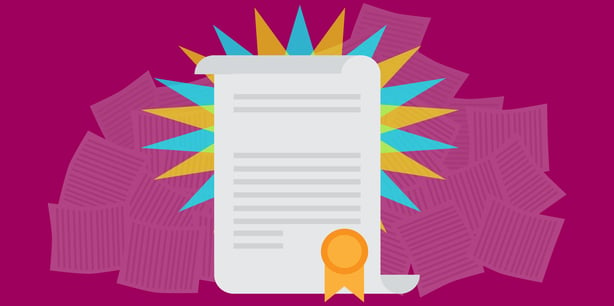
Outsiders to the legal profession tend to believe that you as a lawyer are measured primarily by your ability to perform in court. Anybody who’s ever worked within the industry, however, realizes that your success depends just as heavily (if not more) upon your written presence. Indeed, the documents you compose should serve as your central channel for bolstering your value - both internally (within your firm and court system) and externally (to your clients). Legal documents are not simply vehicles for your thoughts and ideas; they are weapons of tremendous impact that directly affect your odds of winning a case, swaying a potential client, or becoming partner at your firm.
With so much on the line, it’s imperative that your documents are designed to showcase you as a winner. Follow these 5 critical steps to ensure that your letters, forms, briefs, and more, hit hard and push for favorable outcomes across all your ventures.
1. Identify the audience and purpose.
Start by stepping back and re-familiarizing yourself with the larger context behind your document. Think about your audience, and decide which strands of diction and syntax will be most appropriate, accessible, and digestible for them. Try to empathize with your audience. For example, if you’re composing a Client Intake form, understand that your audience includes: a) non-lawyers, and b) people with various levels of English proficiency; so you’ll need to rephrase or define words like “plaintiff” and “beneficiary”.
Next, identify exactly what your document is meant to accomplish. Are you collecting information? Persuading a judge? Intimidating a witness? (Just kidding). In some situations, your intent will entirely determine the format of your document - especially if there are regulatory standards that deter flexibility. Many times, however, you’ll have have some liberty to decide how to convey your message, and there is a significant difference in the tonality and reception of a letter versus that of an email, a card, or a PDF printout.
2. Outline all key components.
Think of your document as a cause-and-effect operation. In identifying your purpose, you found your “effect”; now, identify the trigger factor(s) that will push your audience to actualize your intended effect. If you’re writing a letter or a report, construct a strategy around your core argument - just like you would in litigation. Bullet-point every item you plan to include: key information, examples, graphics, statistics, quotes, etc. Decide if you want to include letterhead, or print on a particular type of paper. If you’re composing a form, list out all the fields you’ll need to include, whatever instructions you’ll provide, and any scanner codes or other items that you want your audience to receive. Be meticulous; it may be annoying, but it’s a lot better than starting over because you overlooked a necessary detail.
3. Construct a frame.
Develop the physical and contextual platform surrounding your message. Begin by categorizing your key components and placing them in a clear, coherent, and strategic order. Pay close attention to dependencies (don’t mention B until you’ve mentioned A) and redundancies. Next, map out the physical space that your finished document will take up on your letterhead, template, or stationery, and distribute your components accordingly. If you’re designing a form, allocate space depending on the type and length of potential answers.
Save time by investing in technology that will automate this process for you - for example, an intuitive software that uses templates to auto-fill the documents and court forms you use repeatedly (wink wink).
4. Create content.
This part is pretty self-explanatory: just turn your outline into tangible, usable words and phrases. Whether you’re composing a letter or a form, put some serious thought into your word choice, and make sure it fits your audience and purpose; remind yourself that “Which of the following applies to you?” will be interpreted differently than “Select all of the following that apply to you”.
Always begin with a draft or prototype, and build from there. Collaboration helps: although you know what message you’re attempting to convey, outside feedback will give you a fresh perspective and highlight any problems you failed you notice.
5. Plug, chug, and optimize.
When your content is finalized and ready, insert it into your frame. Delete anything that isn’t absolutely necessary to the structure and flow of your message, and make stylistic adjustments as needed. If your letter doesn’t fit on a single page, for example, decide whether your standard letterhead should apply to both pages of the document, only the first, or neither. Change your font and point-size to fit your application (ie. don’t use a font that clashes with your letterhead, don't clutter the page, etc.), and, above all, be consistent with your style.
If you’re not sure how to style your document for maximum impact, consult an expert - like Alexandra Devendra, former attorney and founder of Devendra Design. Alexandra specializes in typography, design thinking, and aesthetic innovation as they apply to the practice of law specifically; her company creates and optimizes legal documents (including forms, letters, letterheads, and more) to establish a powerful brand image for client firms.
We’re fortunate enough to be joining forces with Alexandra for our free upcoming webinar, “Building Your Brand: How Legal Design Shapes Your Success”, during which she will cover the basics of legal design and how you can use aesthetics to make your branding statement more powerful. All attendees will be eligible to receive discounts from MerusCase and/or Devendra Design - click here to read more and sign up today!

Leave a Reply